CHANDRAYAAN-3 - ANOTHER IMPORTANT MILESTONE IN INDIA'S SPACE JOURNEY
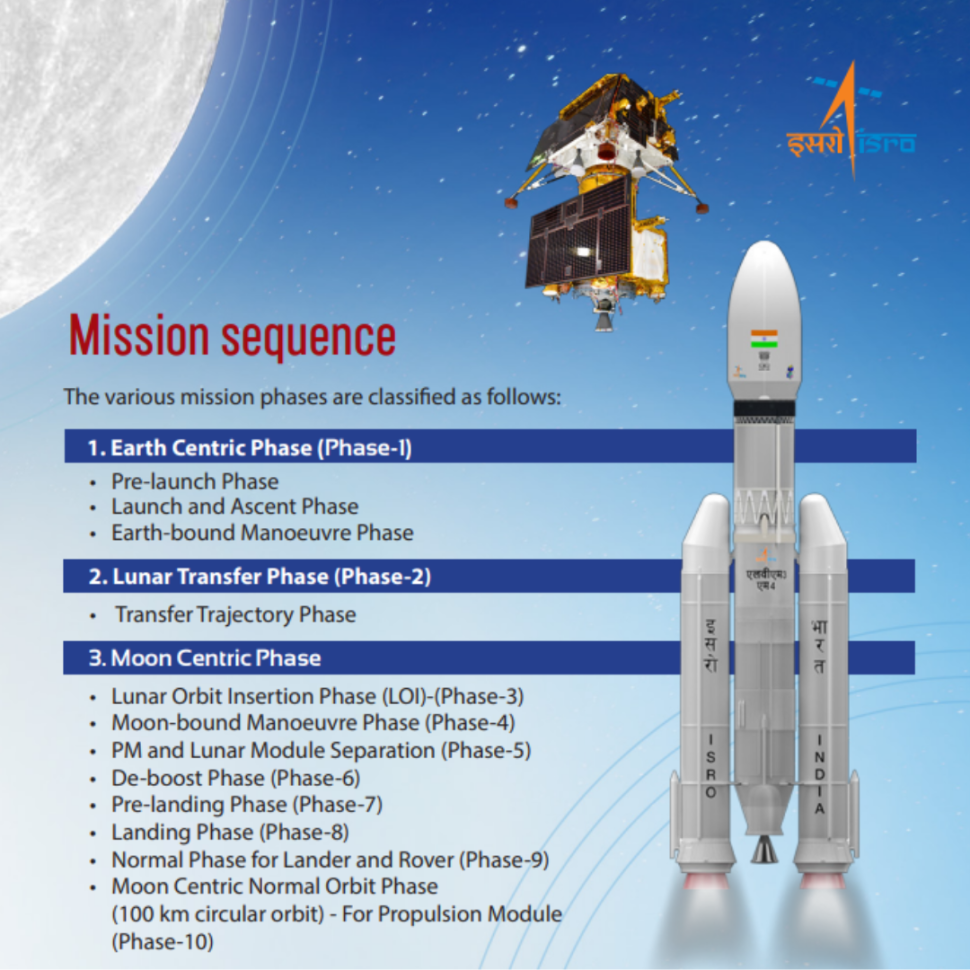
Disclaimer: Copyright infringement not intended.
Context
- President Droupadi Murmu has said that the successful launch of Chandrayaan-3 marks another significant milestone in India’s space exploration.
Key Details:
- The mission Chandrayaan-3 on July 14 launched on Friday from Satish Dhawan Space Centre, Sriharikota. Dr Singh said that India’s earlier mission, Chandrayaan-1 had thrown up new light on various aspects of the moon, and for the first time brought before the world the evidence of the presence of water on the surface of the moon.
- The Minister said, the Chandrayaan-3 mission signals March to the Moon one step closer and also demonstrates the fact that India is not lagging behind other countries.
- He said the unique feature of this mission is that it will not only observe the Moon from the Moon but will also see Earth from the Moon. Dr Singh said, out of 424 foreign satellites launched to date by India, 389 were launched in the last nine years of this government.
- Chandrayaan-3 interplanetary mission has three major modules: the Propulsion module, Lander module, and Rover. The mission's complexity calls for establishing radio-frequency (RF) communication links between the modules.
About Chandrayaan-3 Mission: An Introduction
- Chandrayaan-3 is a follow-on mission to Chandrayaan-2 to demonstrate end-to-end capability in safe landing and roving on the lunar surface. It consists of Lander and Rover configurations.
- It will be launched by LVM3 from SDSC SHAR, Sriharikota.
- The propulsion module will carry the lander and rover configuration till the 100 km lunar orbit. The propulsion module has a Spectro-polarimetry of Habitable Planet Earth (SHAPE) payload to study the spectral and Polari metric measurements of Earth from the lunar orbit.
- Lander payloads:
- Chandra’s Surface Thermophysical Experiment (ChaSTE) to measure the thermal conductivity and temperature; the Instrument for Lunar Seismic Activity (ILSA) for measuring the seismicity around the landing site; Langmuir Probe (LP) to estimate the plasma density and its variations.
- A passive Laser Retroreflector Array from NASA is accommodated for lunar laser ranging studies.
- Rover payloads:
- Alpha Particle X-ray Spectrometer (APXS) and Laser Induced Breakdown Spectroscope (LIBS) for deriving the elemental composition in the vicinity of the landing site.
- Chandrayaan-3, which weighs 3,900kg and costs 6.1bn rupees ($75m; £58m), has the "same goals" as its predecessor - to ensure a soft landing on the Moon's surface.
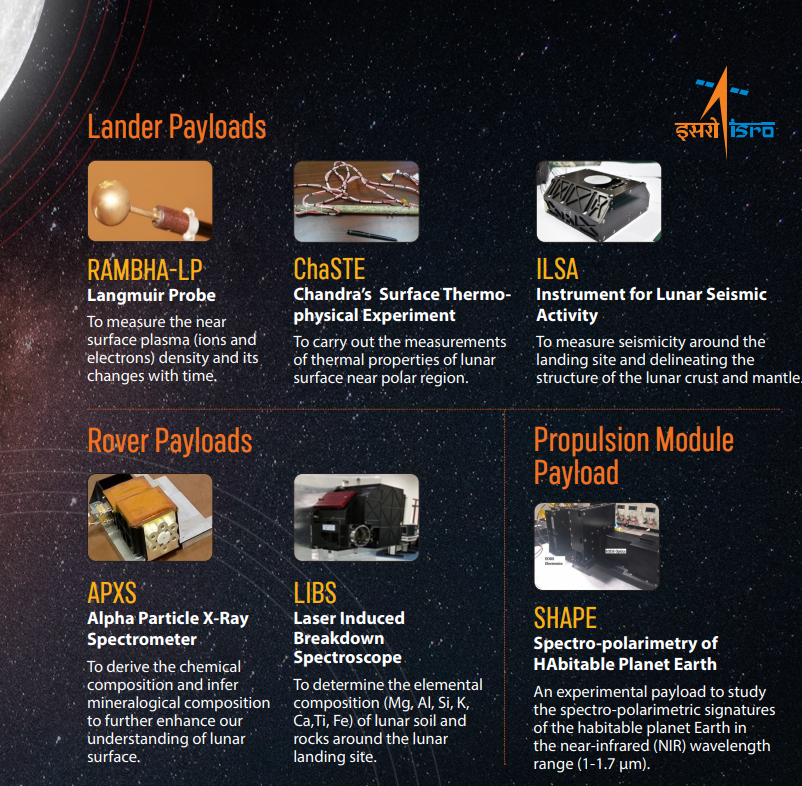
Disclaimer: Copyright infringement is not intended
The mission objectives of Chandrayaan-3 are:
- To demonstrate a Safe and Soft Landing on Lunar Surface
- To demonstrate Rover roving on the moon and
- To conduct in-situ scientific experiments.
To achieve the mission objectives, several advanced technologies are present in Lander such as,
- Altimeters: Laser & RF based Altimeters
- Velocimeters: Laser Doppler Velocimeter & Lander Horizontal Velocity Camera
- Inertial Measurement: Laser Gyro based Inertial referencing and Accelerometer package
- Propulsion System: 800N Throttleable Liquid Engines, 58N attitude thrusters & Throttleable Engine Control Electronics
- Navigation, Guidance & Control (NGC): Powered Descent Trajectory design and associate software elements
- Hazard Detection and Avoidance: Lander Hazard Detection & Avoidance Camera and Processing Algorithm
- Landing Leg Mechanism.
To demonstrate the above said advanced technologies in earth conditions, several Lander special tests have been planned and carried out successfully viz.
- Integrated Cold Test - For the demonstration of the Integrated Sensors & Navigation performance test using a helicopter as a test platform
- Integrated Hot test – For the demonstration of closed-loop performance test with sensors, actuators, and NGC using a Tower crane as a test platform
- Lander Leg mechanism performance test on a lunar simulant test bed simulating different touch-down conditions.
About Chandrayaan-3
|
Launch Vehicle
|
|
|
Two Module Configuration
|
- Propulsion Module (Carries Lander from launch injection to Lunar orbit)
- Lander Module (Rover is accommodated inside the Lander).
|
|
Communication
|
- Propulsion Module: Communicates with IDSN
- Lander Module: Communicates with IDSN and Rover. Chandrayaan-2 Orbiter is also planned for a contingency link
- Rover: Communicates only with Lander.
|
Background
- India’s space program dates back more than six decades, to when it was a newly independent republic and a deeply poor country reeling from a bloody partition.
- When it launched its first rocket into space in 1963, the country was no match for the ambitions of the US and the former Soviet Union, which were way ahead in the space race.
- Now, India is the world’s most populous nation and its fifth-largest economy. It boasts a burgeoning young population and is home to a growing hub of innovation and technology.
- In 2014, India became the first Asian nation to reach Mars, when it put the Mangalyaan probe into orbit around the Red Planet, for $74 million – less than the $100 million Hollywood spent making the space thriller "Gravity."
- Three years later, India launched a record 104 satellites in one mission.
- In 2019, ISRO announced in a rare televised address that India had shot down one of its satellites, in what it claimed was an anti-satellite test, making it one of only four countries to do so.
- That same year ISRO said India was planning to set up an independent space station by 2030.
- Currently, the only space stations available for expedition crews are the International Space Station (a joint project between several countries) and China’s Tiangong Space Station.
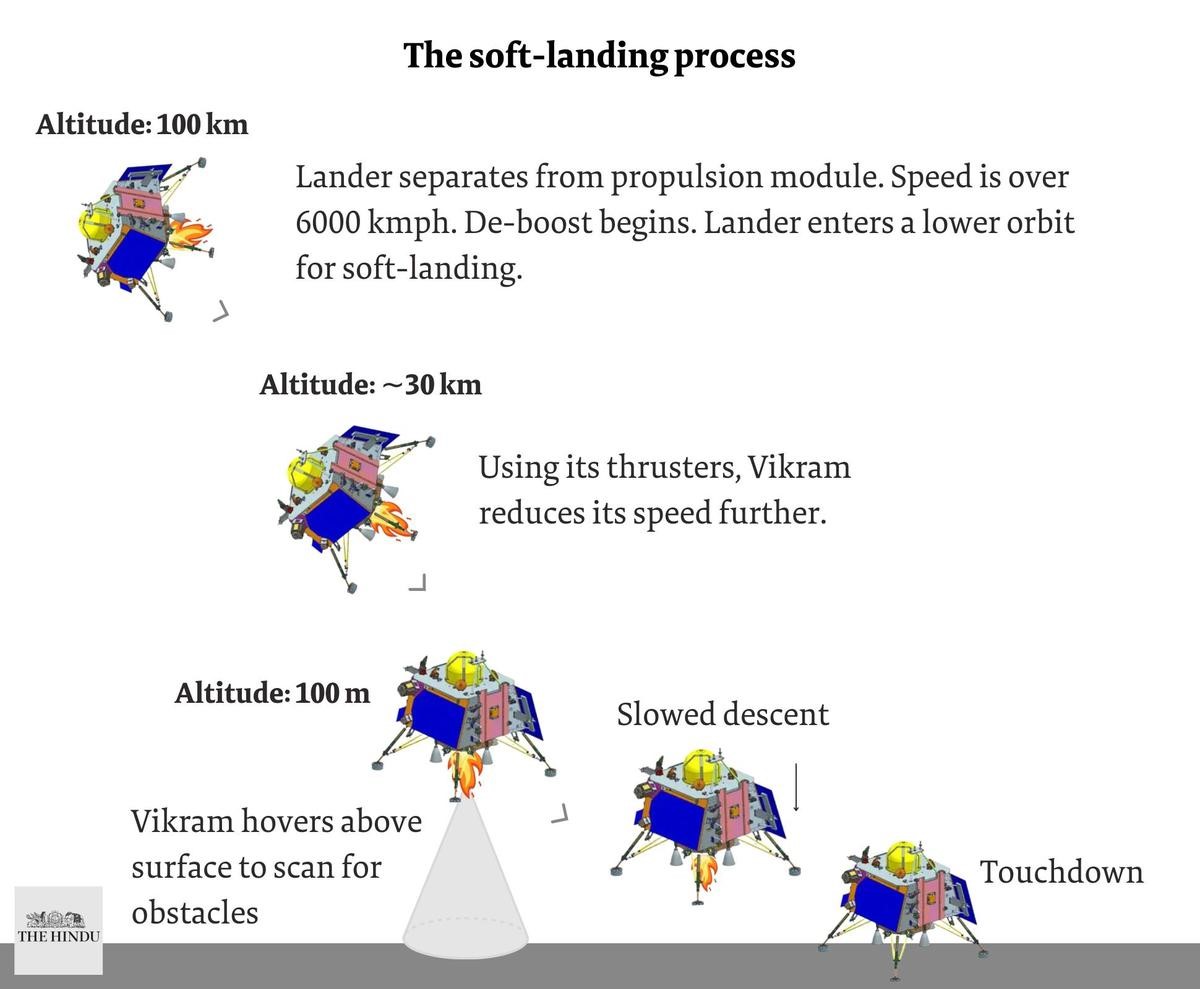
Why is it so difficult to land on the Moon?
- Compared to the Earth, the Moon's reduced gravity, very little atmosphere, and lots of dust pose difficulties in landing. The lunar South Pole is an area of interest for humans due to the presence of water molecules.
- However, the surface also has hazards like rocks and craters, which can make it difficult to identify safe landing sites within shadowed and dark surface regions.
- The ISRO explained that deep-space communication is also another challenge as the large distance from the Earth and the limited onboard and radio signals are weak with heavy background noises that need to be picked up by large antennas.
- Additionally, as the Moon’s location is continuously changing due to its orbital motion, the intersection of its path and Chandrayaan-3 has to be predicted sufficiently in advance with a high level of accuracy.
- Not only, is the Moon's reduced gravity a challenge, but it is also 'lumpy' due to uneven mass distribution under its surface, attempting to orbit around the Moon a tough task.
- During a soft landing, the variation in gravity has to be accounted for while charting the descent trajectory. The ISRO also said the lunar dust, which is negatively charged, sticks to most surfaces, causing challenges such as disruption in the solar pane and sensors’ performance. Temperature variations also make lunar environments hostile for lander and rover operations.
What will Chandrayaan-3 do on the Moon?
- A successful touchdown will mark a huge achievement for ISRO, placing them in a small group of nations that have landed spacecraft on other worlds.
- Beyond this milestone, Chandrayaan-3 has technologies to demonstrate and science to perform.
- Shortly after landing, one side panel of the Chandrayaan-3 lander will unfold, creating a ramp for the rover. The rover will emerge from the lander’s belly, drive down the ramp, and begin exploring the lunar environment.
- The solar-powered lander and rover will have about two weeks to study their surroundings. They are not designed to survive the chilly lunar night.
- The rover can only communicate with the lander, which communicates directly with Earth. ISRO says the Chandrayaan-2 orbiter can also be used as a contingency communications relay.
Challenges for Chandrayaan-3 Mission:
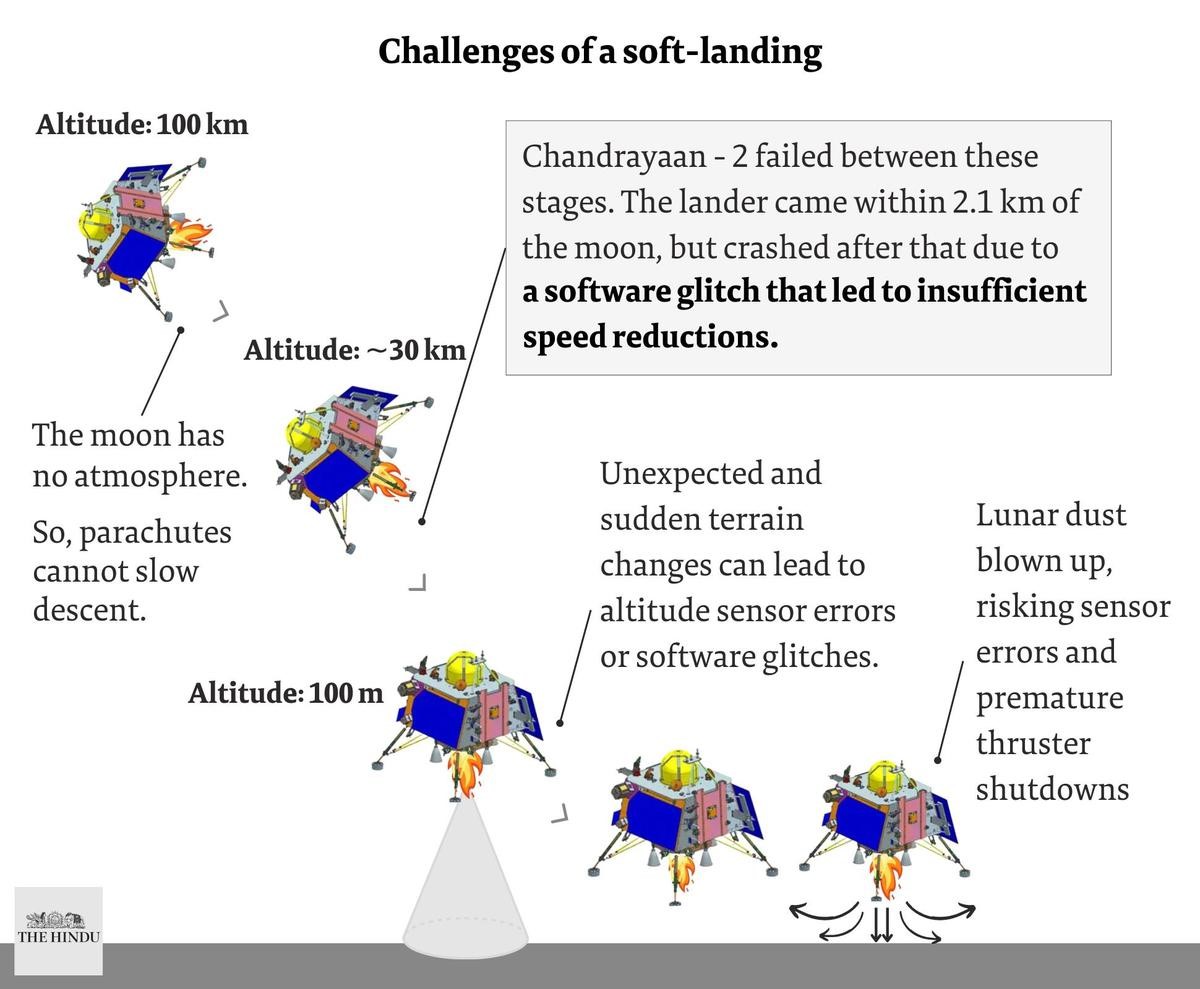
Failed moon missions
- ISRO last attempted to send an unmanned spacecraft to the lunar surface in 2019, the Chandrayaan-2. The mission failed in September 2019 when the Vikram lander crashed into the Moon’s surface.
- Notably, there were other failed missions to the moon from other countries in the same year. The Israel-led Beresheet mission failed in early 2019.
- Further in 2023 April, the Japanese Hakuto-R mission also failed to complete a soft landing on the Moon.
- In the 1960s, the United States and the Soviet Union crashed spacecraft after spacecraft till they finally succeeded in landing one.
- China is the only other country that completed a soft landing on the Moon and it did that on its first try with the Chang’e-5 mission in 2013.
Reaching for the Moon
- Reaching the Moon comes much later in a Mission to Moon. Long before a spacecraft reaches Earth's only natural satellite, it needs to figure out how to safely make the 3,84,400 kilometers journey. That is a long long road to carefully avert failure.
- To be far more specific, making the journey out of Earth's Orbit and entering the Moon's Orbit even before landing on the lunar surface is a task in itself.
- NASA has earlier dumped a moon mission because a failure in the spacecraft’s propulsion system meant that it could not enter the lunar orbit.
Soft landing on Moon
- ISRO Chief called the 15 minute-duration of the soft landing on the Moon “15 minutes of terror" when the lander has to fire its engines at the right times and right altitudes, use just the right amount of fuel, make accurate scans of the lunar surface’s hills and craters and finally touch down.
- The whole process is autonomous, meaning the ISRO cannot do much to guide the lander from Earth.
- Earth's atmosphere is thick enough for a spacecraft to slow down for landing due to friction. However, Moon does not provide a similar atmosphere wherein, if not slowed down, the spacecraft might crash.
- Soft-landing a lunar module means going from the roaring speeds of over 6,000 km/h to zero.
Lunar Dust
- Even after the spacecraft has achieved the difficult task of a soft landing, there is the issue of lunar dust. When touching down, the lander’s thrusters blast lunar dust off the surface at high speeds. This can obscure the camera lens and trigger faulty readings.
- Like Apollo 15, all other Apollo missions faced problems due to dust. Besides dust getting into the astronauts’ space suits and degrading suit pressure, it also caused devices to malfunction.
No GPS on Moon
- The moon does not have a digital map to make a precise landing. This means that onboard computers will have to make quick calculations and decisions to land precisely on the Moon.
- At this point, the onboard computers are the only look out wherein these devices have to autonomously react quickly to last-minute issues.
- To add the cherry to the cake, the fact that the Moon has an uneven surface littered with craters and boulders, landing on either could prove tragic for the mission.
Closing Remarks
- Chandrayaan-3 mission is a significant achievement for the Indian space program. It represents a remarkable step forward for India's space program and showcases the nation's dedication to space exploration and discovery.
https://newsonair.com/2023/07/14/successful-launch-of-chandrayaan-3-marks-another-significant-milestone-in-indias-space-exploration-says-prez-droupadi-murmu/
https://www.thehindu.com/news/national/chandrayaan-3-what-it-takes-to-soft-land-on-the-moon/article67045114.ece
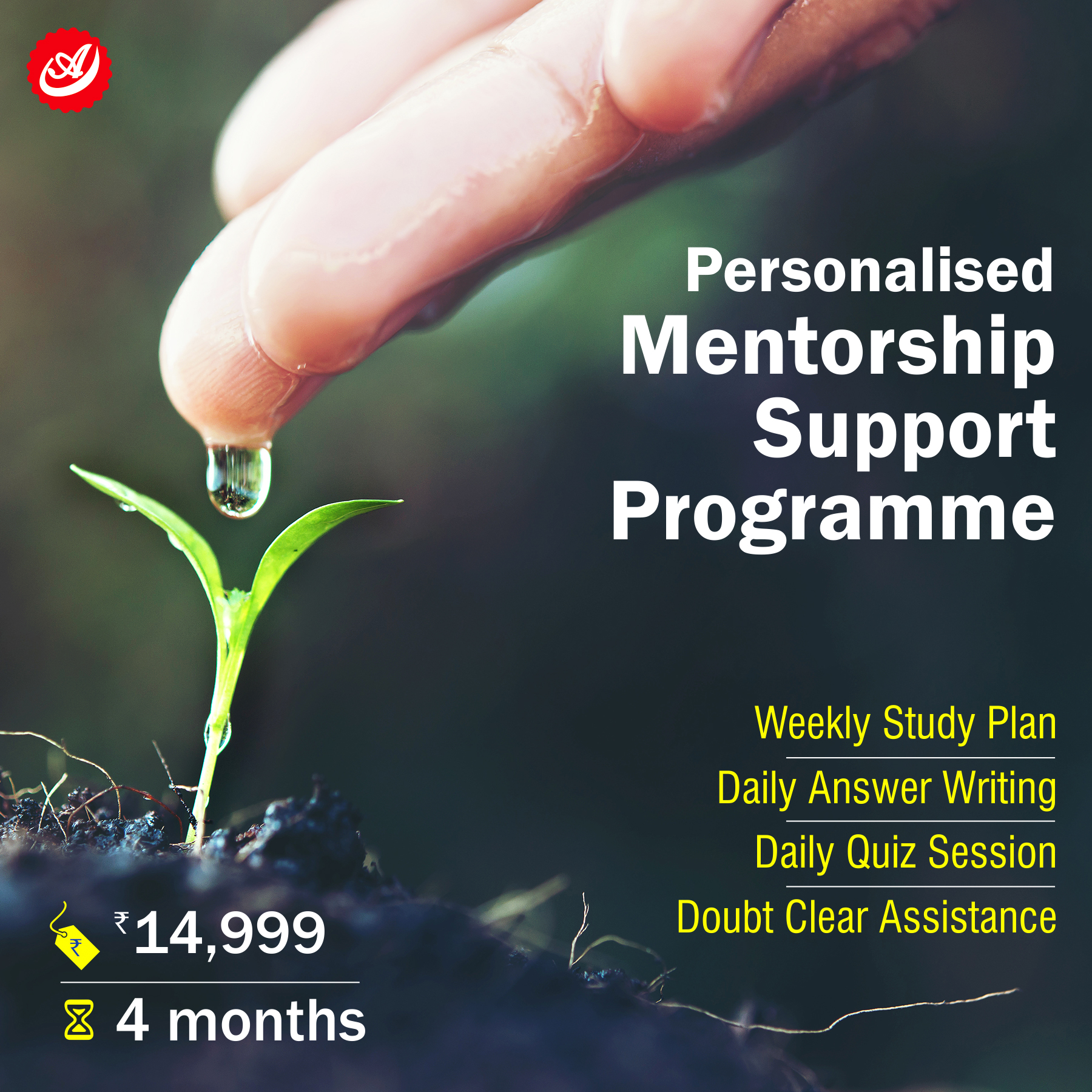
Heatwave
Context
- Heatwaves and extreme weather have gripped most parts of the world including Europe, the US, and Asia.
Details
- Temperatures were expected to reach record highs in Italy today with the United Nations's World Meteorological Organization (WMO) warning of an increased risk of deaths.
- The Mediterranean Island of Sardinia in Italy could see highs of more than 47 degrees Celsius and forecasters said temperatures could hit 40 degrees in several Italian cities.
- Heatwaves this summer, which saw temperatures climb to 53 degrees in California's Death Valley and over 52 degrees in China's northwest, have coincided with wildfires from Greece to the Swiss Alps and deadly flooding in South Korea.
- With baking temperatures hitting Europe during the peak summer tourist season, the WMO warned that the world needs to prepare for increasingly intense heat waves.
- It said, the heatwave in the northern hemisphere was set to intensify over the coming days and warned of an increased risk to health.
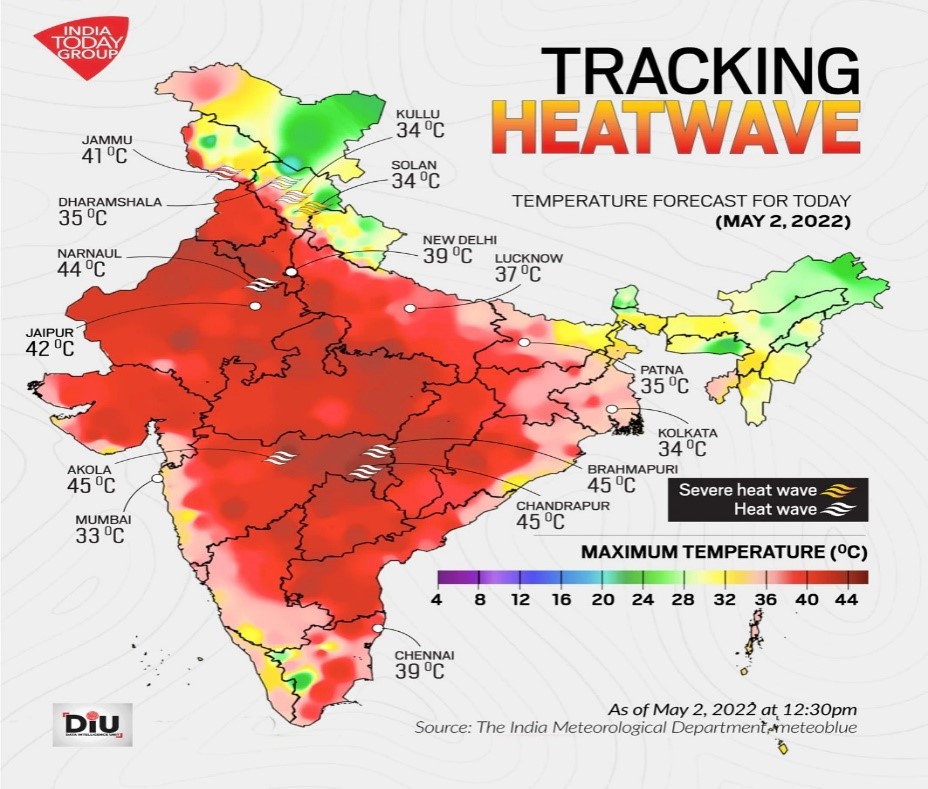
Disclaimer: Copyright infringement is not intended
About Heatwave:
- According to the World Meteorological, a heat wave is when the daily maximum temperature for more than five consecutive days exceeds the average maximum temperature by 9 degrees Fahrenheit.
What is the criterion for declaring a heat wave in India?
- The heat wave is considered if the maximum temperature of a station reaches at least 40°C or more for Plains and at least 30°C or more for Hilly regions.
|
Based on Departure from Normal Heat Wave
|
- Departure from normal is 4.50°C to 6.40°C Severe Heat Wave: Departure from normal is > 6.40 degrees C.
|
|
Based on Actual Maximum Temperature Heat Wave
|
- When actual maximum temperature ≥ 450°C Severe Heat Wave: When actual maximum temperature ≥47.
|
- If the above criteria are met at least in 2 stations in a Meteorological sub-division for at least two consecutive days and it is declared on the second day.
|
About WMO
- Aim: It aims to develop the standardization of meteorological data and promotes meteorology training and research for the benefit of various sectors.
- Headquarters: Geneva, Switzerland.
- Theme: The Theme for WMD 2023 is 'The Future of Weather, Climate and Water across Generations.
- Type: United Nations specialized agency.
https://newsonair.gov.in/News?title=Heatwave-grips-most-parts-of-the-globe%3b-UN-warns-world-must-prepare-for-more-intense-temperature&id=464444
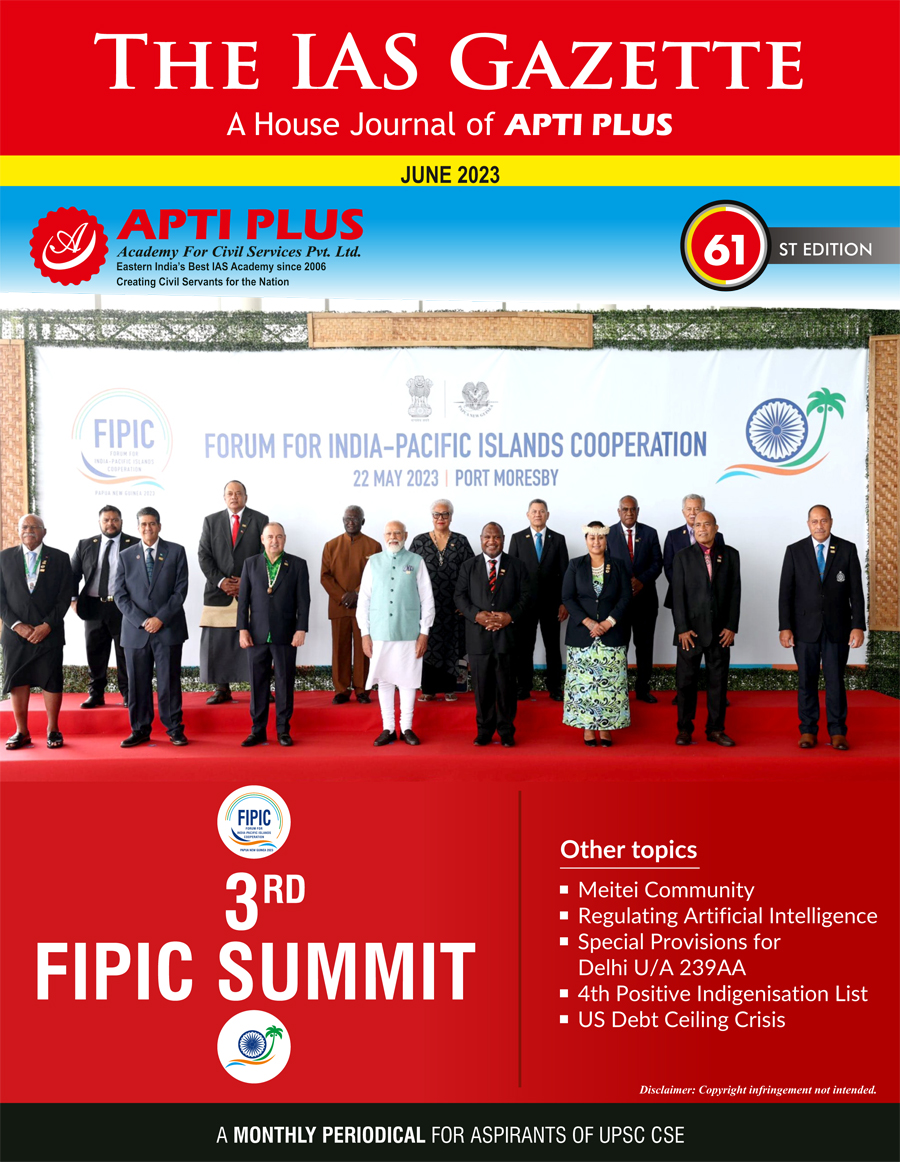
Rupee closes at 82.03 against the US dollar
Context
- In the forex market, the rupee today appreciated 01 paise to close at 82 rupees and 03 paise against the US dollar.
Details:
- The dollar index, which indicates the US currency's strength against a basket of six other leading currencies, was at 99.71 in intra-day trade.
Impact of Rupee depreciation:
- When capital flows out of India, foreign investors sell Indian assets and exchange the rupee received for their currency.
- This increases the supply of the Indian rupee and the demand for other currencies in the foreign exchange market.
- Similarly, when India’s imports increase, India would offer more rupees which would then be exchanged for other currencies.
- This too increases the supply of the Indian rupee and the demand for other currencies in the foreign exchange market.
How does the rupee depreciation affect India?
- When the rupee depreciates, its purchasing power in other countries drops. So, imported goods and services will become more expensive. If India can produce substitutes for the products it imports, the rise in prices of imported goods might help boost domestic industries.
- But, if India is unsuccessful in substituting expensive imported products, it would have to deal with higher import costs, leading to further drops in the rupee’s value.
- Another effect of the depreciating rupee is that it makes India’s exports cheaper. If the price of something drops, its demand should normally increase. This can help export-oriented companies increase their sales.
- Moreover, increased exports mean the demand for the Indian rupee increases, and the supply of other currencies also increase. This might have the effect of increasing the value of the Indian rupee.
- The overall impact of the rupee’s depreciation on the Indian economy would depend on how the export-oriented and import-dependent sectors will respond.
https://newsonair.gov.in/News?title=Rupee-closes-at-82.03-against-the-US-dollar&id=464229

G20 Young Entrepreneurs Alliance Summit
Context
- In a recent episode of the program Spotlight, esteemed guests Dr. Ranjeet Mehta, Economic Analyst, and S. Rangabhashyam, Anchor, engaged in a thought-provoking discussion on the significance of the G20 Young Entrepreneurs Alliance Summit.
Details
- This summit, held within the framework of the G20 Alliance, brings together young entrepreneurs from G20 countries to foster entrepreneurship as a driving force for global economic growth, innovation, societal change, and employment.
- The G20 Young Entrepreneurs Alliance plays a crucial role in nurturing entrepreneurship and empowering young business leaders to drive economic progress.
- The summit provides a platform for young entrepreneurs to exchange ideas, learn from each other's experiences, and collaborate on solutions that promote sustainability.
- The G20 Young Entrepreneurs Alliance serves as a networking platform where young entrepreneurs can advocate for policy changes to create a level playing field for all entrepreneurs globally.
- By nurturing an interest in space science from an early age and leveraging the new education policy, India can harness the potential of its young population to make significant strides in the space sector.
Significance of the summit:
- The G20 Young Entrepreneurs Alliance Summit serves as a catalyst for young entrepreneurs to shape the future of the global economy, drive sustainable development, and address pressing challenges such as climate change.
- Through collaboration, innovation, and policy advocacy, young entrepreneurs can create a positive impact on employment, gender equality, and technological advancements.
- The summit provides a valuable platform for sharing ideas, learning from best practices, and forging partnerships to drive economic growth and sustainability.
https://newsonair.gov.in/News?title=G20-Young-Entrepreneurs-Alliance-Summit-Explores-the-Power-of-Youth-in-Global-Economy-and-Sustainability&id=464449

Buddha’s teachings to empower the youth
Context
- President Droupadi Murmu today called upon the youth to learn from the teaching of the Buddha, to enrich them, and immensely contribute to building a peaceful society, a nation, and a world.
Details:
- The President in her message on Asadha Purnima, the Dharma Chakra Pravartana Divas celebrations said that following the three teachings of Lord Buddha- Sheel, Sadhachar, and Pragya.
- She said that the younger generation could empower themselves and bring a positive impact to society.
- The President further said that on Asadha Purnima we got acquainted with the Dhamma of Lord Buddha which is not only a part of our ancient cultural heritage but is also an essential feature of our daily life.
About Asadha Punima-- Dhamma Chakra Day Programme:
- The day marks Buddha's first teaching after attaining Enlightenment to the first five ascetic disciples (pañcavargika) on the full-moon day of Asadha at ‘Deer Park', Ṛiṣipatana in Sarnath, near Varanasi.
- The teaching of Dharma chakra Pravartana Sutra is also known as the first Turning of Wheels of Dharma.
- It comprises the Four Noble Truths and Noble Eightfold Path.
- The day is also observed as Guru Poornima by both Buddhists and Hindus as a day to mark reverence to their Gurus.
- It is the second most sacred day for Buddhists after the Buddha Poornima or Vesak.
About Buddha:
- Buddha, also known as Shakyamuni Buddha, is the founder of Buddhism. Lord Buddha attained “Enlightenment” under the Bodhi tree.
- After attaining nirvana, Lord Buddha became a figure providing the wisdom he obtained and helped billions of people to end their suffering and attain the state of Nirvana.
- Theravada Buddhism and Mahayana Buddhism are the two primary branches of Buddhism, with Theravada being predominantly followed by the people of Sri Lanka and Southeast Asia, while East Asia is known for its widespread support of Mahayana Buddhism.
- The Four Noble Truths are:
-
- Life is suffering
- The cause of suffering is craving
- The end of suffering comes with an end to craving
- There is a path which leads one away from craving and suffering
https://newsonair.gov.in/News?title=Buddha%e2%80%99s-teachings-to-empower-the-youth%3a-President-of-India-Droupadi-Murmu&id=463605








